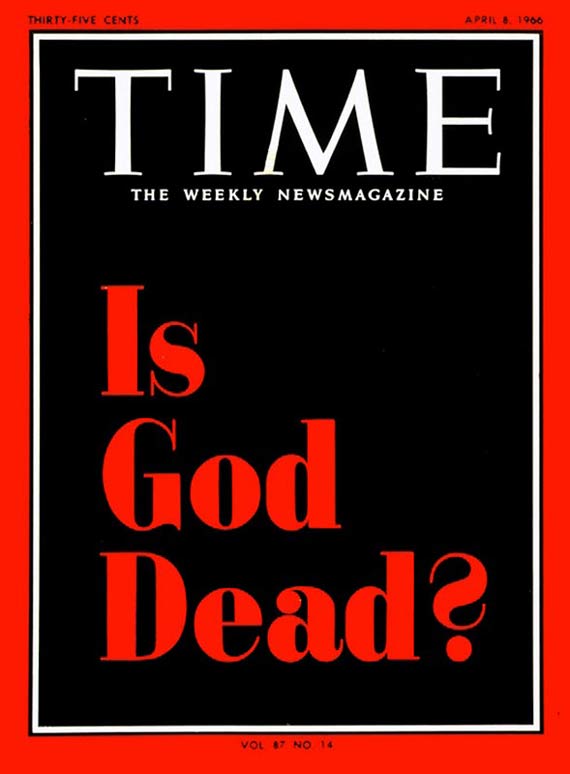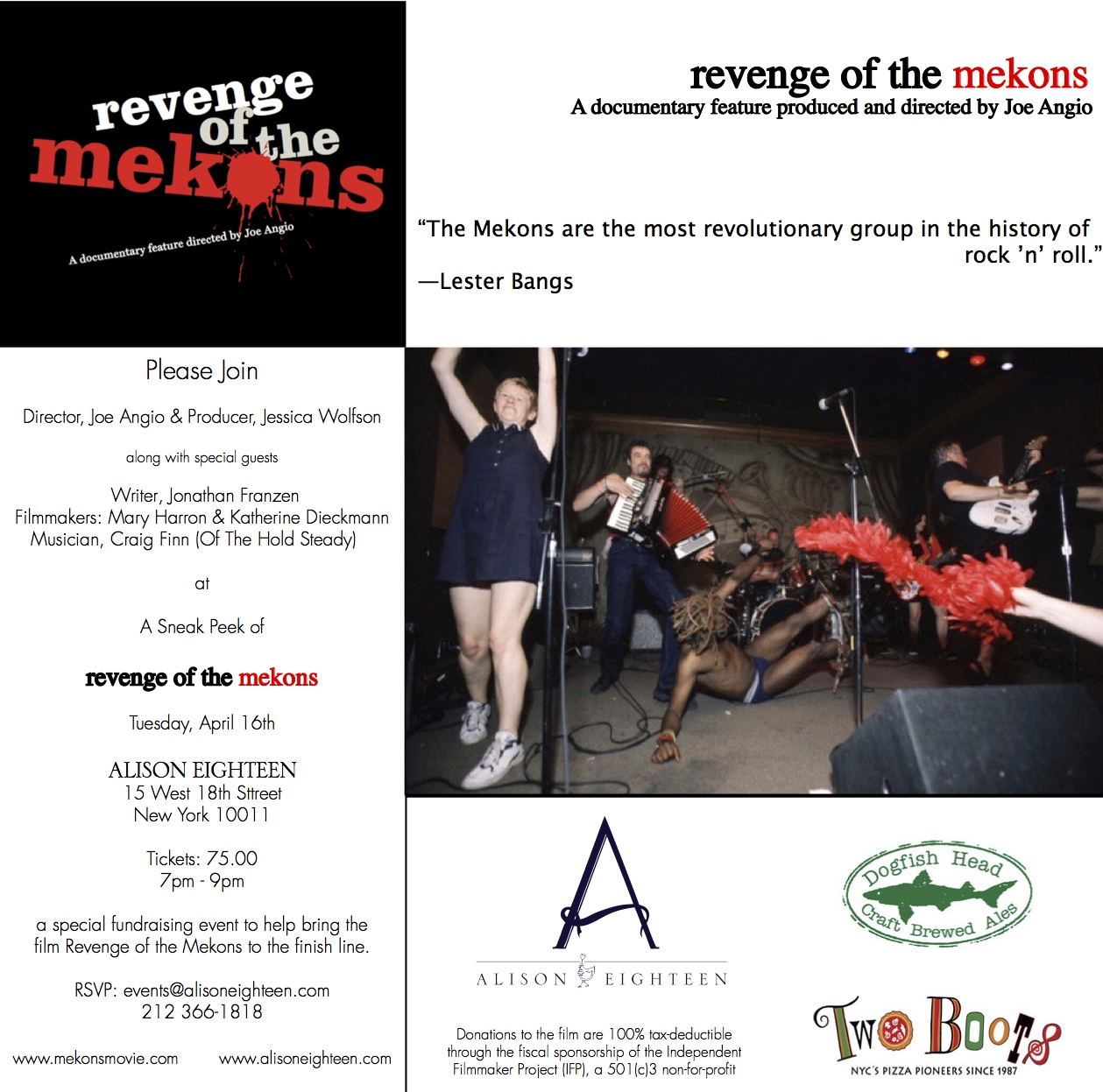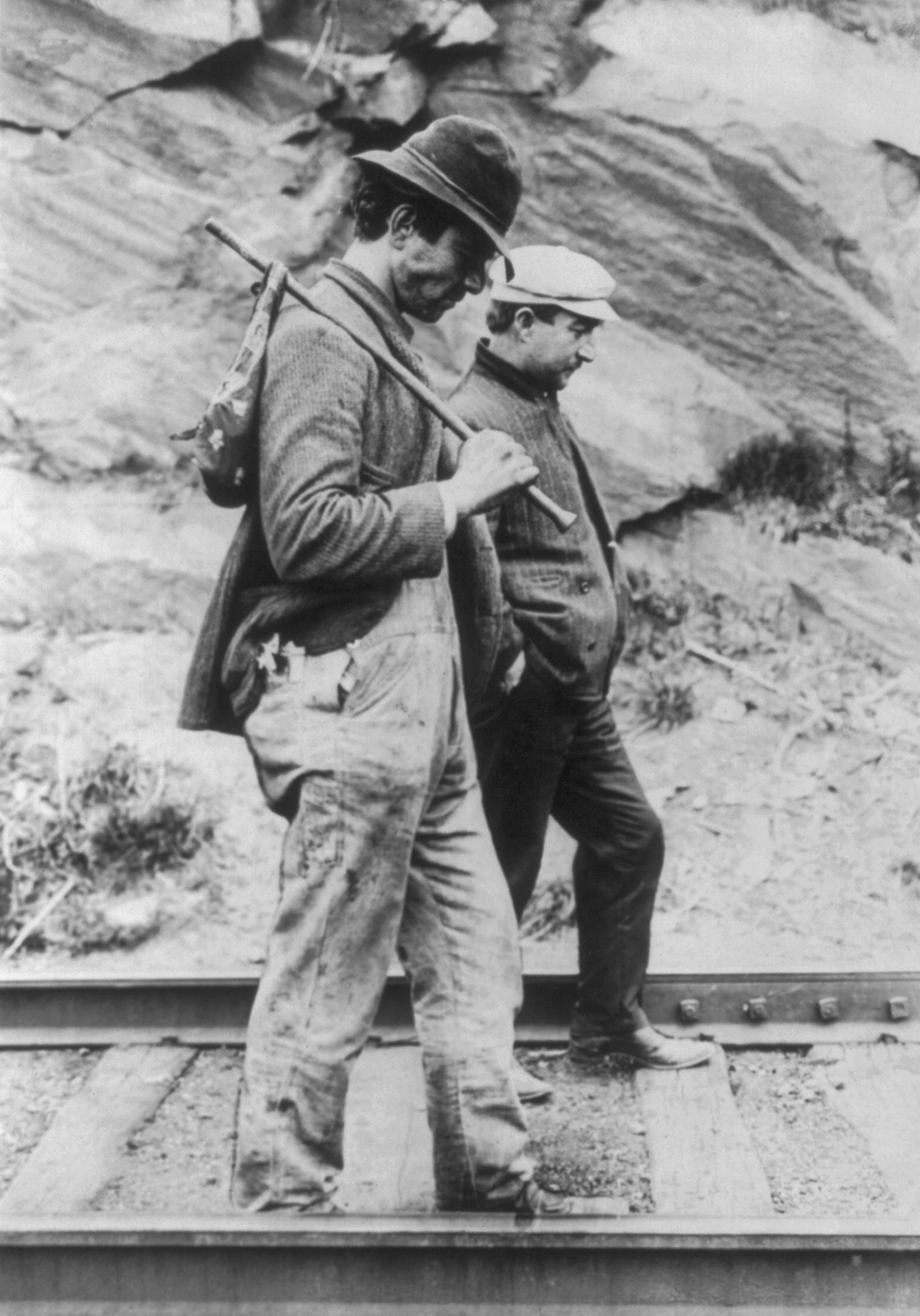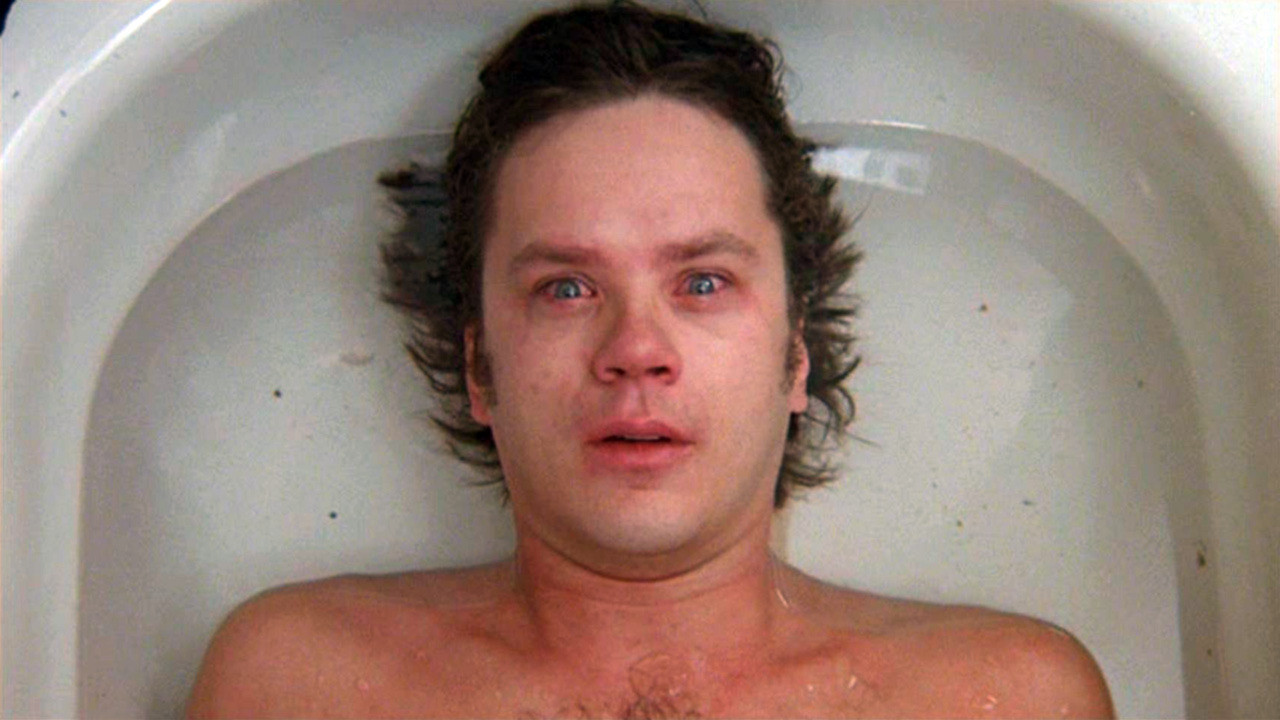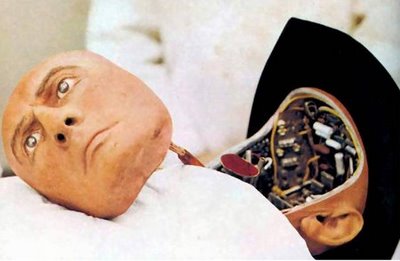Steve Allen, in 1964, visited by Bob Dylan 1.0, before the singer-songwriter’s fame and the decade itself became a gathering storm.
Tags: Bob Dylan, Steve Allen
The opening of “The Rise of the Small and Narrow Vehicle,” Brad Templeton’s blog post about how car design will be transformed when (if) we eventually live in a world of driverless, automated taxis:
“Many of the more interesting consequences of a robotic taxi ‘mobility on demand’ service is the ability to open up all sorts of new areas of car design. When you are just summoning a vehicle for one trip, you can be sent a vehicle that is well matched to that trip. Today we almost all drive in 5 passenger sedans or larger, whether we are alone, with a single passenger or in a group. Many always travel in an SUV or Minivan on trips that have no need of that.
The ability to use small, light vehicles means the ability to make transportation much more efficient. While electric cars are a good start (at least in places without coal-based electricity) the reality is today’s electric cars are still sedans and in fact are heavy due to their batteries. As such they use 250 to 350 watt-hours/mile. That’s good, but not great. At the national grid average, 300 wh/mile is around 3000 BTUs/mile or the equivalent of 37mpg. Good, and cleaner if from natural gas, but we can do a lot more.
Half-width vehicles have another benefit — they don’t take up much room on the road, or in parking/waiting. Two half-width vehicles that find one another on the road can pair up to take only one lane space. A road that’s heavy with half-width vehicles (as many are in the developing world) can handle a lot more traffic. Rich folks don’t tend to buy these vehicles, but they would accept one as a taxi if they are alone. Indeed, a half-width face-to-face vehicle should be very nice for 2 people.”
Tags: Brad Templeton
The problem with pundits is that it almost doesn’t matter if they are right or wrong, provided that they have a forceful personality and can put on a show. The news keeps cycling, its white noise drowning the wrong-headed shouts that should have been embarrassing, that should have carried consequences. In a new GQ postmortem, Michael Wolff points out that despite popular opinion, Christopher Hitchens was just as much of a toolbox as he is. An excerpt:
“This transformation from political irregular and zealous polemicist to towering moral figure was curious, if not amazing, to many people (perhaps all of us) whose careers had intersected with his. How did the character actor become a leading man? How did the fool become a sage? And what about the bad stuff? Not just his full-throttled embrace of the Bush war but, before that, his casual and convenient betrayal of his friend, Hillary Clinton aide Sidney Blumenthal, back in the Monica Lewinsky days. Or his take on Bill Clinton, as virulent as that of the most kooky right-wingers. Or his weirdly tolerant relationship with some of the era’s most infamous Holocaust deniers. These are the kind of epochal contretemps that, in the chattering class, usually make for deep enmity rather than enduring love.
Then, too, this sui generis British figure, full of British class issues, British political hair-splitting, British literary conceits, and plummy accent to boot, became, in his transmutation, a super-American – a gunslinger journalist.
What was the nature of Hitchens’ alchemy?
He was, self-styled, a writer engaged with his time, a bookish man called to join the day’s great and bloody battles of conscience. But really his issues were largely of another era: internecine squabbles on the left; a Cold War attention to the world’s geo-sectarian divisions; God’s existence… or not. He never much grappled with technology, or money, or media, or the developing world’s rising middle class – influences that, surely, were remaking the world a lot faster and a lot more profoundly than his long- time preoccupations.
He saw himself as a Sixties guy, even making the case that he was a significant figure in the tumultuous period from 1966 to 1968: ‘I did my stuff in helping my American comrades discredit first President Johnson and then President Nixon.’ Although, in fact, he was still a teenager in 1968. (‘If you remember the Sixties,’ in Robin Williams’ famous formulation, ‘you weren’t there.’) His was a nostalgic show.”
While Charles Blondin gained fame by crossing over Niagara Falls on a tightrope, and Steve Brodie gained even greater notice by pretending to go over it in a barrel, only “Professor” Alphonse King tried to traverse its channel with tin shoes of his own invention. His results were mixed. From the December 12, 1886 New York Times:
“Buffalo–An attempt was made to-day to outrival the feats of Donovan, Graham, Hanslitt, Potts and Allen in braving the terrors of Niagara, which though a failure in one way, was a success in another. Mr. Alphonse King, who is the inventor of a water shoe, gave exhibitions some years ago in this country and Mexico and not long ago in Europe. He gave one in the Crystal Palace in London, and while there attracted the attention of Harry Webb, an old-time manager, who made him an offer of a year’s engagement to come to this country. While here some time ago Mr. King had looked over Niagara River below the Falls and believed that he could walk across the channel on the patent shoes. He came to this country four weeks ago and has since that time been in New-York City practicing for the trip. While there, Thomas Bowe, hearing of King’s determination to attempt the trip, made a wager of $1,500 with Webb that King could not walk 100 feet in the current. The money was deposited with a New-York newspaper, and on Friday afternoon Messrs. King and Webb, accompanied by A.C. Poole, of Poole’s Eighth Street Theatre, reached the Falls.
The trip to-day gave King two cold water baths, and demonstrated that while he could walk with or against the current all right it was impossible to walk across the river because of the eddies, which twice upset them. He retired confident that what he set out to do could not be done. King’s ‘shoes’ are of tin, 32 inches long, 8 inches wide, sloping at the top, and 9 inches deep. Each weighs 30 pounds. They are air-tight and have in the middle an opening large enough to admit the feet of the wearer. At the bottom are a series of paddles, which operate automatically as fins.”
Tags: A.C. Poole, Alphonse King, Harry Webb, Thomas Bowe
From a new WBUR interview with cell-phone inventor Martin Cooper, who was inspired to his invention by Star Trek communicators, a passage about his very hopeful prognostication for the future of the cell:
“Cooper sees other revolutions coming as a result of cell phone technology.
‘Just suppose that you could do a physical examination, not every year, which people do and which is almost worthless, but every minute, because you’re connected, and because we have devices that you can put on your body that measure virtually everything on your body. If you could be sensing your body all the time and anticipate a disease before it happens,’ Cooper said.
A computer would process the data, Cooper said, and detect illness and disease before they took hold. It could then instruct a patient on what to do to stop the illness.
‘If you extrapolate that thought, we are going to eliminate the concept of disease. And I think that’s going to happen within the next generation or two,’ he said.
In addition to health care, he sees changes in education, as learning tools become more mobile and students are able to spend more time out in the world learning.
‘If we don’t blow ourselves up, this is going to be a really wonderful world,’ Cooper said.”
Tags: Martin Cooper
I guess the essential question for Time Inc. and Time magazine in particular is this: No matter how good a job the current editors and managers do, can it be enough for the brand to survive, let alone thrive? There has always been amazing talent there (and still is), but a monolith has trouble adapting, regardless of how much cash at hand or head start it has. The company’s first foray into digital in the mid-1990s, Pathfinder, was a huge flop because editors at the various publications were reluctant to give away their content. And as media decentralization broadened as cable TV gave way to the Internet, where everyone has a channel or 200 of their own, a behemoth with large fixed costs has trouble keeping the “barbarians” at the gates. Rick Stengel has proven a very good choice as Time‘s editor at the moment of digital do or die, but has too much terrain already been ceded? Is the war even winnable?
From “Running Out of Time,” Joshua Macht’s very good Atlantic article with a very bad title:
“The newsweekly’s long slide has been blamed on pretty much everything from lack of investment to the AOL merger. And of course there’s the notion that the newsweekly category itself is simply no longer viable–that in the age of the Internet, the weekly rhythm is just too long. But then why the success of The Week or the Economist? For Time, the challenge wasn’t just the weekly print cycle; it was the weekly print cycle plus a crushing load of fixed costs. It’s expensive to support a model that demands reporters around the world, big name columnists, and massive distribution. The high costs means that there’s virtually no room for Time to stumble.
Unfortunately, the brand would fall hard. I joined Time magazine in the summer of 2002 just after the bursting of the dot-com bubble. The largest project during my tenure as editor and general manager of Time.com was to digitize the entire archive going back to March of 1923 – which pushed me deep into Time magazine lore. I tracked the early days when the magazine first took flight to the WWII era when Time could sell more than 400,000 copies in a week even with some little-known Italian general on the cover.
It kept on growing after that. At its zenith the brand could reach more than 20 million people around the world each week. Time practically defined what it meant to be mass media. It was a brand for pretty much everybody. Television and then cable news (CNN in particular) eventually began to chip away at its position, and Time went though struggles and repeated attempts at reinvention through the years. But it took the arrival of the Internet to truly endanger it.”
Tags: Joshua Macht, Rick Stengel
The opening of E.O. Wilson new WSJ essay, in which he acknowledges that scientists aren’t as adept at math as they are thought to be, a mistaken belief that has thinned the discipline’s ranks:
“For many young people who aspire to be scientists, the great bugbear is mathematics. Without advanced math, how can you do serious work in the sciences? Well, I have a professional secret to share: Many of the most successful scientists in the world today are mathematically no more than semiliterate.
During my decades of teaching biology at Harvard, I watched sadly as bright undergraduates turned away from the possibility of a scientific career, fearing that, without strong math skills, they would fail. This mistaken assumption has deprived science of an immeasurable amount of sorely needed talent. It has created a hemorrhage of brain power we need to stanch.”
Tags: E.O Wilson
Margaret Thatcher, the former British Prime Minister, who just passed away, in a brief on-air spat with David Front in 1985 during the Falklands War. Thatcher, an iron-fisted conservative and the European parallel to Ronald Reagan, was often derided for being cruel to have-nots. She is not warmly remembered in her country while Reagan largely is in his. What does that say? Anything?
Tags: David Frost, Margaret Thatche, Ronald Reagan
There are no UFOs and there never were, so it’s good that there aren’t nearly as many reports these days of people seeing them. Is that because we’re more rational now? Perhaps, but we don’t seem very rational with our politics and conspiracy theories. Is it because cameras are everywhere and all-knowing? Maybe. Because we trust more now in technology and science than in religion? Could be.
In his new Aeon essay, “Seeing Is Believing,” Stuart Walton tries to understand why there are no more aliens in the sky, no more ghosts in the machine. An excerpt:
“UFO sightings reached their spate roughly within a decade of the release of Steven Spielberg’s spellbinding filmClose Encounters of the Third Kind (1977). One good reason to believe there were never any UFOS is that nobody sees them any more. Once, the skies were refulgent with alien craft; now they are back to their primordial emptiness, returning only static to the radio telescopes, and offering the occasional meteor shower to the wondering eye.
It isn’t only flying saucers that have receded into history. They are being followed, more gradually to be sure, by a decline in sightings of ghosts, recordings of poltergeists, claims of psychokinesis and the rest, as is regularly attested by organisations such as the Society for Psychical Research in London and the UK-wide research group Para.Science. Many of those with a vested interest in the supernatural industry naturally resist this contention, but there is far less credulity among the public for tales of the extraordinary than there was even a generation ago. The standard explanation attributes this to growing skepticism. But, as is only fitting for the paranormal, it might be that there are more mysterious forces at work.”
________________________
1973: “For weeks now there have been reports of sightings of UFOs in many parts of the country.”
Tags: Stuart Walton
I’m still not completely convinced people will be any more willing to give up the wheels of their cars than they are their guns, but development of driverless cars continues apace. From an article by Rick Montgomery at AP, some questions being asked as driving becomes increasingly automated:
“The question has sped beyond whether or not technology will ever let motorists read a magazine en route to work — which techies say is a reality nearer than you think.
Rather, society has begun to ask: Do we really want this?
Computer engineer Don Wunsch voices an emphatic yes.
‘The days of human drivers deserve to be numbered,’ said Wunsch, a professor at the Missouri University of Science & Technology in Rolla. ‘Humans are lousy drivers. It’s about time computers take over that job.’
Others note that the rush to make autos fully autonomous, and conceivably far safer, promises to run into huge societal bumps.
In a transportation center such as Kansas City, how many truckers won’t be needed in 2025? How will insurance companies react when hands-free accidents happen — and nobody disputes they will — or roadside sensors go awry?
Will systems navigating 21st-century vehicles reach obsolescence and need costly upgrades every few years, like today’s smartphones? And, perhaps the most critical question, who will make certain these innovations will make travel less deadly?
‘You have these brand new capabilities coming to the market at a time of grossly inadequate funding’ of federal safety regulators, said Clarence Ditlow of the Washington-based Center for Auto Safety, a watchdog group.
Only after risky ‘experimentation on the road,’ he said, will the public’s overall safety in a driverless world be known.”
Tags: Don Wunsch, Rick Montgomery
Some of you may recall a post from November 2010 when I directed your attention to a Kickstarter campaign for filmmaker Joe Angio, who was trying to finish editing his latest documentary, Revenge of the Mekons. The campaign was successful, the edit is complete and the buzz is tremendous. To defray closing costs and to be able to take his film about the legendary rock group to festivals, Joe is having a Manhattan fundraiser party on Tuesday April 16 at Alison 18. Tickets are $75 and you can RSVP by calling (212) 366-1818.
While Joe is loath to hold a fundraiser, such action is required. For those of you unfamiliar with the world of independent documentarians, these directors are essentially hoboes with cameras. Usually, the cameras are rented. Some of the male documentarians could actually buy a camera if they could make a sale at a sperm bank, but who would want their children to turn out like that? The line must end.
This party is very exclusive and open only to those who have $75 and can throw on a pair of pants before entering the building. (Pants requirement gladly waived at door.) In addition to Two Boots pizza and Dogfish Head Brewery beer, you’ll get an extended sneak peek at this very anticipated film. There will also be special guests, including the brilliant novelist Jonathan Franzen, who appears in the movie discussing the Mekons. And you know if Franzen’s there, Oprah Winfrey won’t be. Finally, an evening without Oprah crawling up your ass! An added bonus: Donald Trump will also not be there. Mostly because he’s a moron.
There are 667,200 millionaires living in the New York City area, and if you’re reading Afflictor, you’re most certainly not one of them. But if you have $75 and want to have fun and support good cinema and good music, this is your chance.•
Tags: Joe Angio, Jonathan Franzen, Revenge of the Mekons film
The opening of Brad Templeton’s article about the future of brain enhancement, which suggests that chimpanzees may become post-simian–something we’ve tried before in more modest ways–before we become post-human:
“Once this chimp brain is created, it will cause a flurry of research. Quite possibly, the ‘software’ part of the brain will be published and made available for others to work on, and the hardware will be readily available too.
Indeed, the software of this chimp brain might be made available for free distribution. An ‘open source’ ape, for all to experiment on.
And they will experiment on it. Once again, even if a human brain is similarly available, moral and legal considerations will limit what experimentation can be done, while actions on the ape-brain will probably not be nearly as limited.
Apes however are remarkably similar to humans. As you may know, chimps share 98% of our DNA. In addition, we have made intensive study of the ways in which they are different, and we will attempt to learn more.
Thus some of the first experiments on this artificial chimp brain will be to enhance it along the lines that humans and chimps are different. Humans are not so qualitatively different in our brains from chimps, though the few differences have a magnified effect in our capabilities. We have more of certain types of brain structures, and some of our structures are larger and have more neural connections. There is no component of a human brain not found in a chimp brain. Experimenters will quickly try to see what happens if you modify those aspects of the working chimp brain. They will also ‘graft’ information from post-mortem and live scans of human brains, where available.
If the artificial chimp brains ‘run’ much faster than biological ones, they will be able to perform these experiments quickly. They may be able to have their computer play out a thousand different experimental scenaria, each playing out years of biological scale time — perhaps in just a day of real time. They will quickly learn what works and what doesn’t, what enhances and what doesn’t. And there will be many of them.
I think quite quickly they could create a chimp brain capable of human level intelligence or beyond. She may then need training or ‘rearing’ by real human parents, but she will be a very quick and supremely capable learner. All this will happen much more quickly than the ethical changes to occur which would allow scientists to do similar experiments on human based brains.”
Tags: Brad Templeton
From Edward Luce’s new Financial Times profile of Harvard philosopher Michael Sandel, a passage about the marketization of morality:
“I ask him about his latest book, What Money Can’t Buy: The Moral Limits of Markets, in which he argues that the US and other countries are turning from market economies into market societies, as Lionel Jospin, the former French prime minister, once put it. Sandel argues that we live in a time of deepening ‘market faith’ in which fewer and fewer exceptions are permitted to the prevailing culture of transaction. The book has infuriated some economists, whom he sees as practitioners of a ‘spurious science.’
He has been at loggerheads with the profession for many years. In 1997, he enraged economists when he attacked the Kyoto protocol on global warming as having removed ‘moral stigma’ from bad activity by turning the right to pollute into a tradeable permit. Economists said he misunderstood why markets work. Sandel retorts that they know the price of everything and the value of nothing. To judge by his sellout lecture tours, he has clearly tapped into a larger disquiet about the commodification of life.
Which countries are the least receptive to his concerns about market fundamentalism? ‘China and the US – no question,’ he replies instantly. ‘In other parts of east Asia, in Europe and in the UK and in India and Brazil, it goes without arguing that there are moral limits to markets and the question is where to locate them. In the US and China, there are strong voices who will challenge the whole idea of there being any limits.’”
_________________________
“What’s you answer, smartypants?” asks TV’s best talk-show host.
Tags: Edward Luce, Michael Sandel, Stephen Colbert
Greg Lindsay co-authored the smart book, Aerotropolis, which I’ve blogged about before. In the New York Times, he has a new article about work places arranging their space to overcome “structural holes,” hoping to “engineer” serendipity and creativity. An excerpt:
“ONE reason structural holes persist is our overwhelming preference for face-to-face interactions. Almost 40 years ago, Thomas J. Allen, a professor of management and engineering at M.I.T., found that colleagues who are out of sight are frequently out of mind — we are four times as likely to communicate regularly with someone sitting six feet away from us as we are with someone 60 feet away, and almost never with colleagues in separate buildings or floors.
And we get a particular intellectual charge from sharing ideas in person. In a paper published last year, researchers at Arizona State University used sensors and surveys to study creativity within teams. Participants felt most creative on days spent in motion meeting people, not working for long stretches at their desks.
The sensors in the A.S.U. study were supplied by Sociometric Solutions, a spinoff company of the M.I.T. Media Lab’s Human Dynamics Laboratory that uses ‘sociometric badges’ to measure workers’ movements, speech and conversational partners. One discovery, says Ben Waber, a co-founder of the company and a visiting scientist at M.I.T., was that employees who ate at cafeteria tables designed for 12 were more productive than those at tables for four, thanks to more chance conversations and larger social networks. That, along with things like companywide lunch hours and the cafes Google is so fond of, can boost individual productivity by as much as 25 percent.
‘If you just think of serendipity as an interaction with an unintended outcome, you can orchestrate pleasant surprises,’ says Scott Doorley, a creative director at Stanford University’s Institute of Design.”
Tags: Greg Lindsay
From the February 15, 1884 New York Times:
“Youngstown, Ohio–Kitty Gilmour, daughter of the late Dr. Gilmour, of New Lisbon, died on Monday after six hours’ illness. Physicians pronounced the disease hemorrhage of the bowels. The body was placed in a vault here. At 2 o’clock this afternoon the undertaker went to the vault to bury another body and discovered moisture on the glass of Miss Gilmour’s coffin and noticed that her face was flushed. He summoned Dr. Nelson, the girl’s uncle, who ordered the body to be taken to his house. It was quickly removed from the coffin and placed on a cot. The doctor found on placing his hand underneath the body that it was warm. Bottles filled with hot water were placed at the feet and along the sides, an electric battery was applied ineffectually, and every known restorative used, but at 8 o’clock to-night none had been very effective. The appearance of the corpse was very life-like, a natural color overspreading the entire face except the chin, on which is a purple spot. The neck and arms have not stiffened. The folded hands clutch a bouquet of white roses. At the throat is a bunch of tuberoses. The lady was 24 years old, and was to have been married in a few months. She was the only child of a widowed mother, who is almost crazed with grief and suspense. Much excitement exists. A council of physicians has been summoned who will experiment with the body during the night.”
Tags: Dr. Gilmour, Dr. Nelson, Kitty Gilmour
clean urine needed – $50 (carroll gardens)
I will pay $20 for a clean sample and another $30 for a total of $50 for a clean sample for Monday. must test clean first before money exchanges and then must be a male under the age of 35.
I have tested clean for almost a year and unfortunately got tricked into doing something Wrong this weekend.
We’re better and worse than ever in America. We’re haves, but we’re have-nots. Technology has gleefully led to a decentralization of media power, and science is accomplishing what was once sci-fi. Hollywood can barely keep up with the world, let alone predict it, as the Dream Factory has been outpaced by reality, However, we’re also deeply narcissistic, most often using our amazing technology merely like mirrors, distracted by our distorted sense of self, so much so that we seem unable to address a political and economic system that has run aground. And the mainstream culture is irredeemably stupid, all “housewives” and halfwits. If you want to see how much we’ve slipped in that regard, just have a look at an issue of People magazine from the 1970s, when pop singers and public intellectuals shared the pages. You can’t blame the People people for a culture that has become saturated with stupidity. They’re just taking the pulse.
But could a revolution of some sort wipe all the inequity away? I doubt it, because we love being entertained by clever toys and reflecting pools. Of course, if personal power and narrowcasting become political and writ large, that could change. Occupy Wall Street, despite being derided as a short-lived, fashionable failure, actually framed a Presidential election. But can such a movement do more than frame? Can it break the glass?
From “A Practical Utopian’s Guide to the Coming Collapse,” David Graeber’s new Baffler article:
“Normally, when you challenge the conventional wisdom—that the current economic and political system is the only possible one—the first reaction you are likely to get is a demand for a detailed architectural blueprint of how an alternative system would work, down to the nature of its financial instruments, energy supplies, and policies of sewer maintenance. Next, you are likely to be asked for a detailed program of how this system will be brought into existence. Historically, this is ridiculous. When has social change ever happened according to someone’s blueprint? It’s not as if a small circle of visionaries in Renaissance Florence conceived of something they called “capitalism,” figured out the details of how the stock exchange and factories would someday work, and then put in place a program to bring their visions into reality. In fact, the idea is so absurd we might well ask ourselves how it ever occurred to us to imagine this is how change happens to begin.
This is not to say there’s anything wrong with utopian visions. Or even blueprints. They just need to be kept in their place. The theorist Michael Albert has worked out a detailed plan for how a modern economy could run without money on a democratic, participatory basis. I think this is an important achievement—not because I think that exact model could ever be instituted, in exactly the form in which he describes it, but because it makes it impossible to say that such a thing is inconceivable. Still, such models can be only thought experiments. We cannot really conceive of the problems that will arise when we start trying to build a free society. What now seem likely to be the thorniest problems might not be problems at all; others that never even occurred to us might prove devilishly difficult. There are innumerable X-factors.
The most obvious is technology. This is the reason it’s so absurd to imagine activists in Renaissance Italy coming up with a model for a stock exchange and factories—what happened was based on all sorts of technologies that they couldn’t have anticipated, but which in part only emerged because society began to move in the direction that it did. This might explain, for instance, why so many of the more compelling visions of an anarchist society have been produced by science fiction writers (Ursula K. Le Guin, Starhawk, Kim Stanley Robinson). In fiction, you are at least admitting the technological aspect is guesswork.”
Tags: David Graeber
10 search-engine keyphrases bringing traffic to Afflictor this week:
- david cronenberg scanners 1981 film review
- does donald trump cologne smell bad?
- can lawyers defend animals in court?
- mail in new york delivered by pneumatic tubes
- john cheever article in people magazine
- human endurance athletes racing horses
- she awakes early on the morning of april 10, 2030
- murder of atheist activist madalyn murray o’hair
- information about abraham lincoln’s son tad who died young
- paul williams philip k dick rolling stone article

Afflictor: Thinking NBC has an in-house candidate ready should Jimmy Fallon prove to not be edgy enough for the Tonight Show.
- Old Print Article: Sailor tattoos six-year-old daughter from neck to feet. (1882)
- Classic Photograph: Margaret and Kate Fox, the Original Rappers.
- Featured Videos: Norm Macdonald, who now looks like a Wayland Flowers puppet, welcomes Bob Einstein to his video podcast + Muhammad Ali visits Dick Cavett (1978) + Because poor people all have food now, we just invented a hovercraft golf cart + Petman is now camouflaged and lifelike + A 1948 PR film about Preston Tucker and the “Tucker Torpedo” + Robotic dragonflies take to the air.
- Recently Posted on NYC’s Craigslist: I’m a great wife and a terrible human being + The ban in NYC on large sodas is still a bad idea, but… + I make even my bunny sad.
- Douglas Coupland, now 50, talks about his breakthrough novel, Generation X.
- The critics agree: Stephen Colbert is the best host in late night.
- Sure the economy is fucked, but David Stockman is still full of crap.
- Don King profiled, as he slips further into irrelevance.
- Michael Kelly was the first journalist to die in the needless Iraq war.
- Evgeny Morozov worries that seamless technology disappears consequences.
- Charlie Rose, that handsome robot, just did an Ask Me Anything on Reddit.
- Can we–and should we–geoengineer our way out of climate change?
- Gerrymandering has kept Congress Republican, but it has killed the GOP.
- Transcranial direct-current stimulation works, may have side effects.
- Data will not kill narrative, but it sure will alter it.
- We have really poor priorities when we think about the future.
- The era of hamstrung government in California may soon be over.
- Los Angeles is the first city to synchronize all its traffic lights.
- The increasingly harsh weather may turn the Jersey Shore into a ghost town.
- A new software is capable of automating the grading of essays.
- The self-quant movement will make you better and less private.
- An excerpt from a 1931 New Yorker report about Bell Labs.
- An Economist report about H7N9, a scary new strain of avian flu.
- Rodney Brooks considers the next wave of manufacturing robotics.
- A brief note from 1908 about monkey arson.
- Afflictor Nation: Great Britain rules in March.
- This week’s Afflictor keyphrase searches.
There are plenty of legitimate reasons to dislike Don King, the boxing promoter in decline. He’s a liar and a manipulator and, worst of all, he coldly discarded the very boxers who sacrificed their health for his bottom line, treating them like so many disposable commodities. But none of those character flaws are the main thing that made him so reviled at his apex. He was hated because he dared to be black and a capitalist in an age before rappers perfected the greed-is-good ethos. He didn’t aspire to be twice as good as his white counterparts as African-Americans are often expected to be, but instead hustled his way into the money game, bending and breaking its protean rules, gleefully pointing out that his hands were no dirtier than anyone else’s, just darker. Only in America.
The opening of “The End of Don King,” Jay Caspian Kang’s excellent new Grantland profile of the former national figure in his dotage:
“In the back room of Manhattan’s Carnegie Deli, Don King picked at a pastrami sandwich with his fingers. He had just been asked a question about his electric hair and, for the first time in a day filled with radio and television interviews, King paused before he spoke. A cautious look crept over his graying eyes. As he silently deliberated between several well-worn origin myths about the height of that hair, King tweezed a scrap of pastrami between two well-manicured fingernails and dragged the meat through a puddle of deli mustard. ‘My hair is God’s aura,’ King explained while chewing. ‘Everything went up when I got home from the penitentiary. One night I went to lie down next to my wife and my hair started popping and uncurling all on its own — ping, ping, ping, ping! I knew that it was God telling me to stay on the righteous path so he could one day pull me up to be there with him.”
King smiled, but not the smile you remember. That smile — the screwed-on mask of boundless optimism — had been on full display throughout this week of promotions, but at the Carnegie, King had finally succumbed to exhaustion. ‘When I’m doing good, the hair goes straight up,’ King said, a bit wearily. ‘Now that things are difficult, the hair has gotten a little flatter.’
I had been trailing Don King for two weeks between Boca Raton, Florida, and now New York City. This was the closest he had come to admitting that things just weren’t what they used to be. In three days’ time, Tavoris ‘Thunder’ Cloud, King’s last fighter of any consequence, would step into the ring against Bernard Hopkins at the Barclays Center in Brooklyn. The story of the fight should have been about the 48-year-old Hopkins and his quest to become the oldest champion in boxing history. But because Don King was involved, the focus during fight week had been on Don King and his uncertain future. If Cloud lost to Hopkins — especially in a boring way — his short career as an opponent in televised events would be put in serious jeopardy and King would have very little left to promote. In a pre-fight interview, Hopkins, who, like so many other fighters, had worked with King before an inevitable falling-out, had this to say about his old promoter: ‘What a way to put the last nail in the coffin. Who thought it would be me that would shut him down?’
At the Carnegie, nobody was talking much about Tavoris Cloud or Bernard Hopkins or the impending end of Don King Promotions. King had come to one of his favorite New York landmarks to enjoy a quiet lunch with three longtime employees. They talked, mostly, about music and old times in Manhattan, the city where King lived and worked during the majority of his reign at the top of boxing. The conversation eventually turned to James Brown. Don King, still digging his fingers into his sandwich, muttered, ‘James Brown died owing me $50,000. But I loved James Brown.'”
Tags: Don King, Jay Caspian Kang
From the thoughtful people at Boston Dynamics, a new, camouflaged and more lifelike version of Petman. From the company’s copy: “PETMAN has sensors embedded in its skin that detect any chemicals leaking through the suit. The skin also maintains a micro-climate inside the clothing by sweating and regulating temperature.”
Moving automated grading beyond multiple choice ovals and No. 2 pencils, a new software has been developed that is said to be capable of grading essays. This can’t be good. From John Markoff in the New York Times:
“Imagine taking a college exam, and, instead of handing in a blue book and getting a grade from a professor a few weeks later, clicking the ‘send’ button when you are done and receiving a grade back instantly, your essay scored by a software program.
And then, instead of being done with that exam, imagine that the system would immediately let you rewrite the test to try to improve your grade.EdX, the nonprofit enterprise founded by Harvard and the Massachusetts Institute of Technology to offer courses on the Internet, has just introduced such a system and will make its automated software available free on the Web to any institution that wants to use it. The software uses artificial intelligence to grade student essays and short written answers, freeing professors for other tasks.
The new service will bring the educational consortium into a growing conflict over the role of automation in education.”
Tags: John Markoff
Muhammad Ali visits with Dick Cavett in 1978 in the wake of his loss to Leon Spinks. Ali, now slowed and beloved, would win a rematch in his final great moment as a boxer, but he really, really should have been retired for several years at this point.
Tags: Dick Cavett, Muhammad Ali
The new technologies allow us to learn more about ourselves (when we’re not busy using them to delude ourselves), but the they also provide this information to corporations and governments. From “The Age of Digital Improvability,” Sunil Khilnani’s Livemint piece about the double-edged sword of the “self-quant” movement:
“In the past that technocratic ambition was associated with states and government—benign know-alls who would govern in the interests of the populace. That dream has now resurfaced, in a form more attractive to a generation mistrustful of government and the state, but enamored of their own capacity to manage their well-being.
Now, the dream of continuous self-improvement can be realized by our own actions, with our own gadgets. We can all now discover our own inner technocrat—that better self, who compiles the data, creates the databanks, and then seeks to regulate our behavior to bring it into line with ‘best practice.’ Like the mirror in the gym, digital tracking becomes a perpetually at-hand guide to make us self-aware of our patterns and habits—and, as with the mirror in the gym, it also lets us steal glances at the performance of others, so we can compare and improve.
And yet. Self-quantification may be a way of making us feel unique—creating our own individual number profile. But it also turns us into a statistic, an impersonal number that can be compared with others. The accumulation of large data sets on habits and actions, the creation of ranking systems for products, services, experiences—all this gives governments and policymakers, companies and organizations, the raw material through which to shape our behavior. New policy strategies are emerging, connecting such data with behavioral psychology.”
Tags: Sunil Khilnani
There was a brief mention on the New Yorker site the other day about one of the first science stories the magazine ever published, Malcolm Ross’ 1931 article “The Invention Factory,” a Depression-era look inside Bell Labs early in the century it dominated world science. As Jon Gertner reminded in last year’s The Idea Factory, Bell Labs was rewriting the rules of communication back when talkies were the newest thing. An excerpt from the gated piece that highlights just three ways that AT&T’s research division was changing life at the time the article was published:
“The most recent achievement of the Laboratories is the improvement of airplane radiotelephony to the point where a pilot can be heard anytime that he wants to talk to groundlings. For the past year two airplanes have been flying around New Jersey, by day and by night, in the worst weather they can find, near the ground and at high altitudes. A neat pattern of efficiency under all conditions was accumulated. The equipment engineers studied it and tinkered again with their devices. Already every mail pilot over the Alleghenies has a human voice from below to direct him.
 Fairly soon the teletypewriter girl may make her Wall Street debut. The machines are the same as those one hundred and twenty-two electrical typewriters now used in the New York State Police network. A message typed on one will reproduce on any, or all, of the others. The new trick is a switchboard which will connect all subscribers to the service. You will call Operator by pounding ‘OPR.’ She plugs in your correspondent and what you type on your machine comes out on his. This puts business deals in printed form, which is better confirmation than spoken words and cheaper than telegrams. If your party isn’t in his office, Operator lets you write on his typewriter and he finds your message when he gets back. …
Fairly soon the teletypewriter girl may make her Wall Street debut. The machines are the same as those one hundred and twenty-two electrical typewriters now used in the New York State Police network. A message typed on one will reproduce on any, or all, of the others. The new trick is a switchboard which will connect all subscribers to the service. You will call Operator by pounding ‘OPR.’ She plugs in your correspondent and what you type on your machine comes out on his. This puts business deals in printed form, which is better confirmation than spoken words and cheaper than telegrams. If your party isn’t in his office, Operator lets you write on his typewriter and he finds your message when he gets back. …
Hollywood, of course, relies on Bell Laboratory for its technology. Eight months ago the Laboratories turned over to Hollywood an improved sound-recording system which nearly eliminates the buzzing noise which is continually present in all talkies made under the former method. To demonstrate the improvement they made a talkie which begins with the usual blurred sound background, then suddenly clears. The difference is impressive enough to make you conscious of a distinct gratitude for the release from noisy irritation.”
Tags: Malcolm Ross






